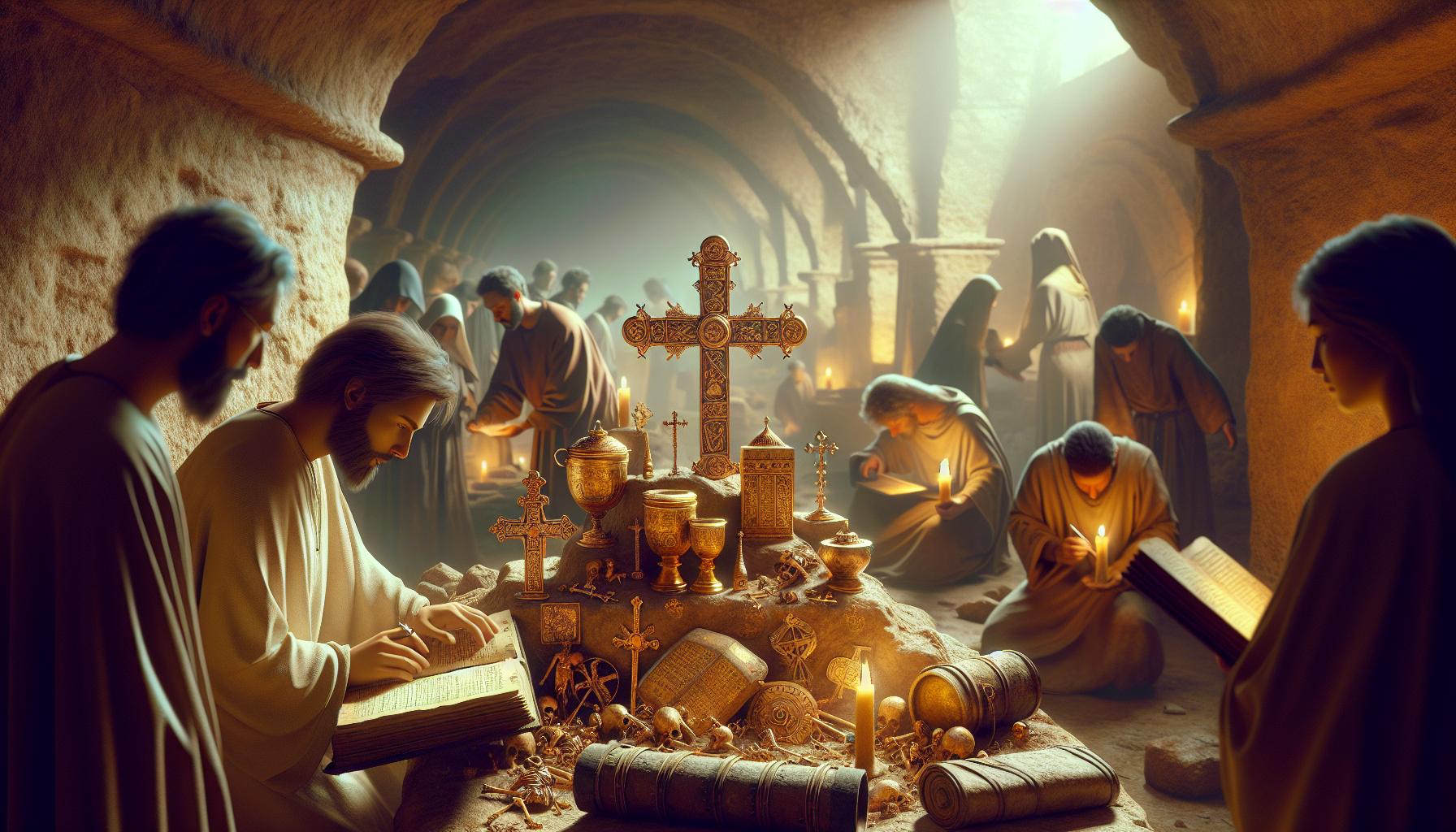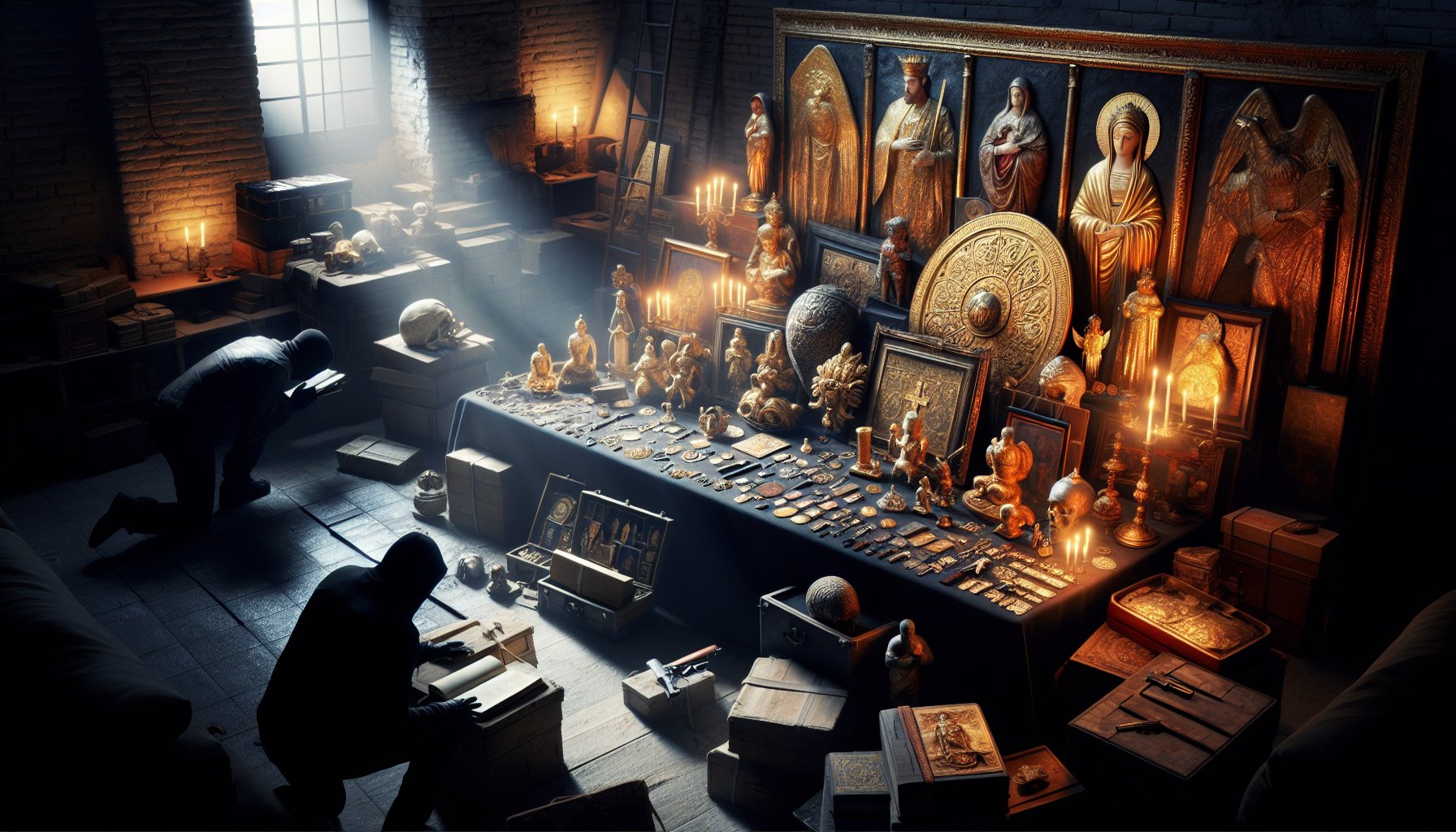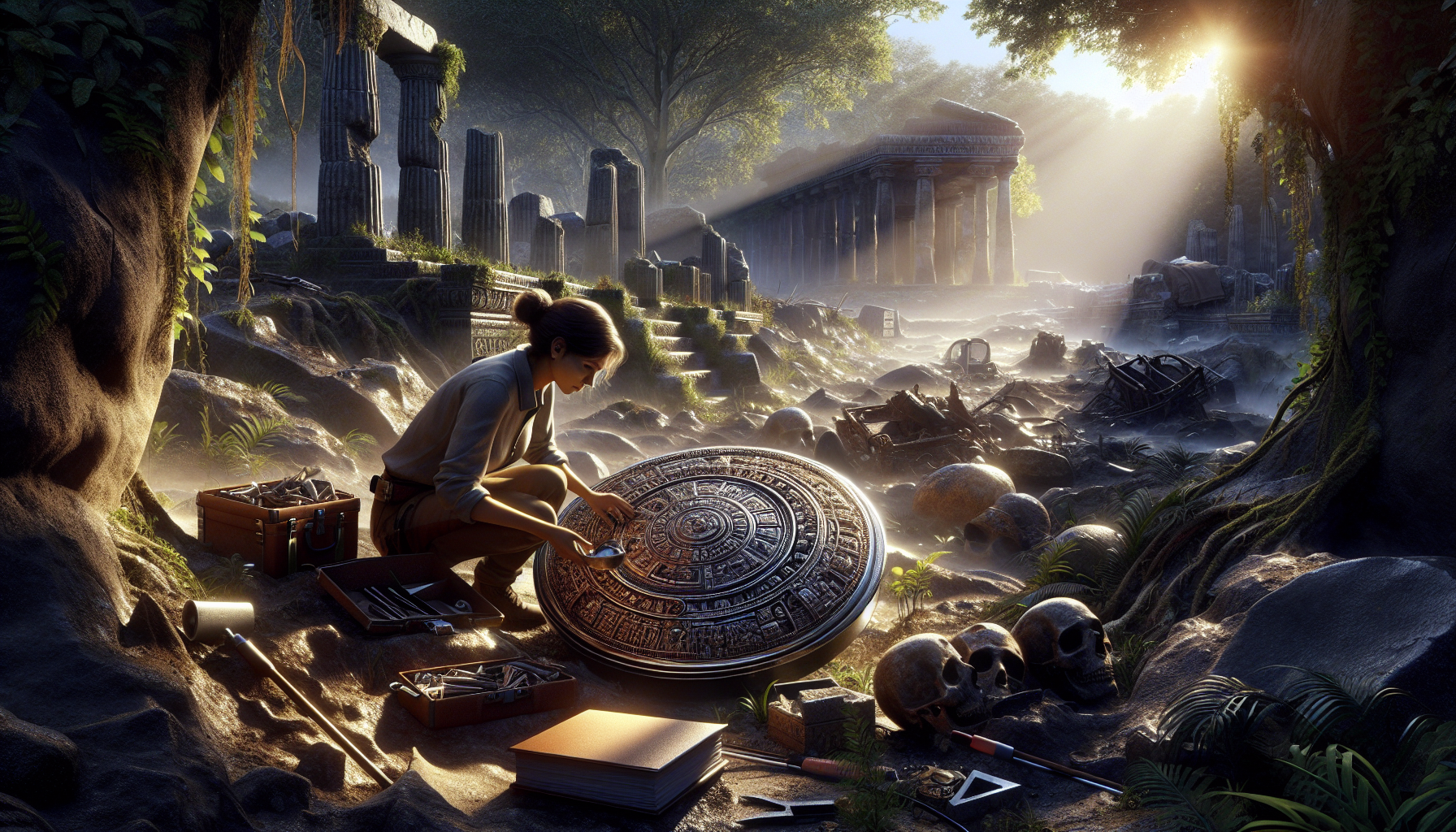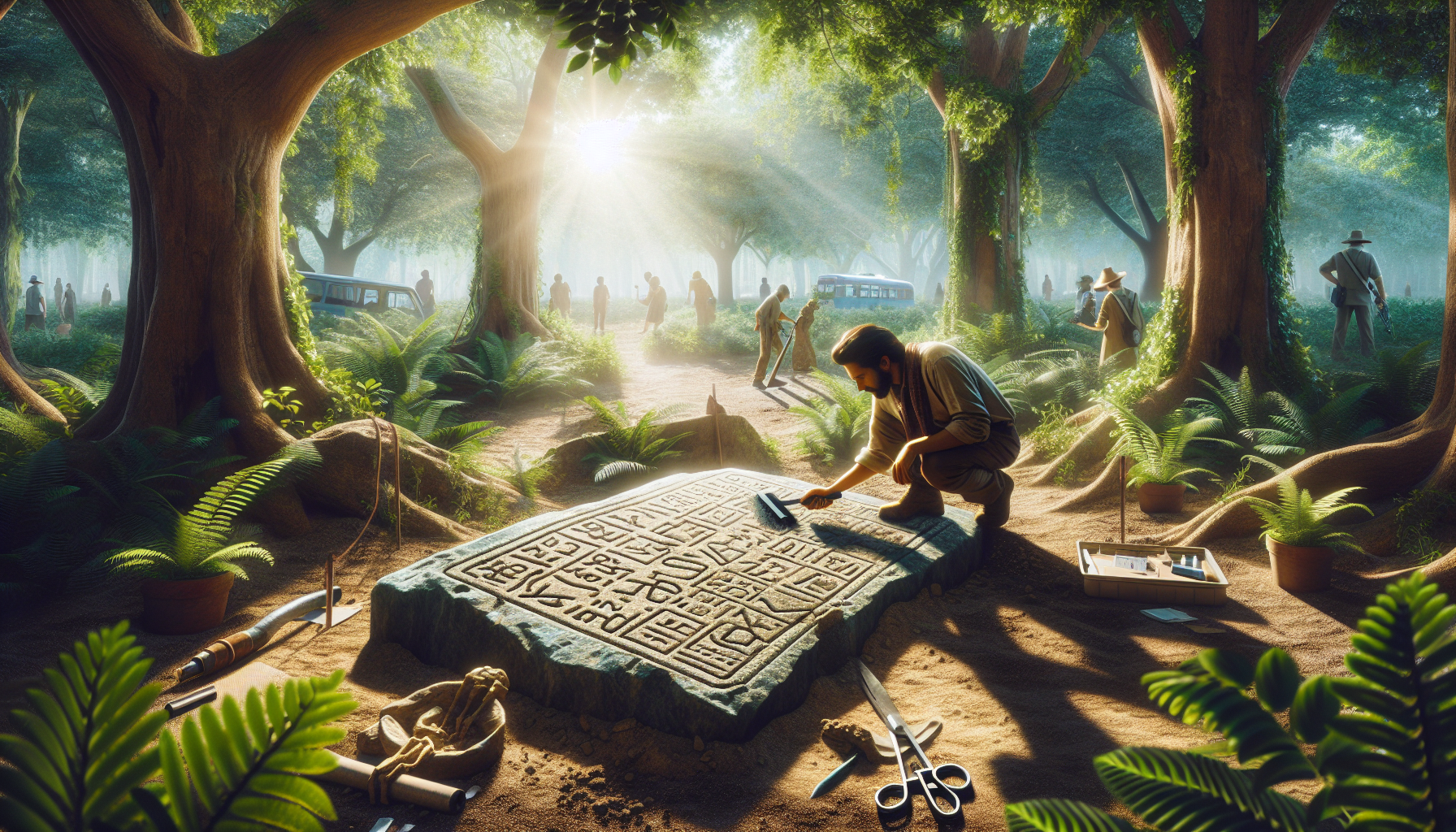In the quiet corners of dusty libraries and beneath the cobblestones of ancient monasteries, whispers of history lie dormant, waiting for curious minds to unearth their secrets. The allure of the past, particularly the mystique of medieval Europe, captivates historians and enthusiasts alike. The continent is a tapestry woven with the stories of faith, conquest, and cultural evolution. Among its myriad of historical narratives, the Christian relics of this era stand out, offering glimpses into the spiritual lives of our ancestors. These relics, often forgotten in the annals of time, hold a mesmerizing power that beckons us to explore further. 🌿
Christian relics from medieval Europe are more than mere artifacts; they are the silent storytellers of a world where faith was as integral to life as the air one breathed. From the revered bones of saints to the fragments of the True Cross, these relics have fueled pilgrimages, inspired art, and even sparked conflicts. They serve as tangible connections to a time when the divine and the mundane were inextricably linked, when the boundaries between heaven and earth were blurred by fervent belief. This exploration will not only delve into the origins and significance of these relics but will also shed light on the intriguing tales of how many of these sacred objects were lost to history, only to be rediscovered in the most unexpected of circumstances.
In this journey through time, we will traverse the landscapes of medieval Europe, uncovering the stories behind these remarkable relics. We will examine the cultural and historical contexts that gave rise to their veneration, and how they impacted the societies that cherished them. From the grand cathedrals that were built to house these treasures to the humble shrines in remote villages, each relic has its own story to tell. We will also explore the modern-day quests to locate and authenticate these artifacts, a testament to their enduring legacy and the undying human fascination with the divine. Join us as we embark on this odyssey of discovery, unearthing the treasures of the past and illuminating the enduring faith of medieval Europe. ✨
The Fascinating World of Medieval Christian Relics
The Middle Ages, a period stretching from the 5th to the late 15th century, was a time of profound religious influence in Europe. One of the most intriguing aspects of this era is the reverence and mystique surrounding Christian relics. These relics, often considered physical remains of saints or objects associated with them, held immense spiritual significance and were believed to possess miraculous powers. They were pivotal in shaping medieval Christianity, influencing both religious practices and the socio-political landscape of the time.
Christian relics were often housed in ornate reliquaries, some of which have survived to this day. These reliquaries, crafted with exquisite artistry, not only served as vessels of spiritual power but also as symbols of the divine connection between heaven and earth. Pilgrimages to sites housing these relics were common, and they played a critical role in the dissemination of Christian beliefs and practices across Europe. As we delve deeper into this topic, we will uncover some of the most notable Christian relics from medieval Europe and explore their historical and spiritual significance.
The allure of relics was such that they became central to religious worship and pilgrimage, drawing people from all over Europe. This fervor was not just limited to the devout; even monarchs and nobles sought to acquire relics, seeing them as a means of securing divine favor and legitimizing their rule. In many ways, relics were the beating heart of medieval spirituality, providing a tangible connection to the divine and the saints who had lived exemplary lives of faith.
Notable Christian Relics and Their Historical Significance
The True Cross
The True Cross is perhaps one of the most legendary relics in Christian history. Believed to be the actual cross upon which Jesus Christ was crucified, fragments of the True Cross were highly venerated and sought after during the Middle Ages. The discovery of the True Cross is attributed to Saint Helena, mother of Emperor Constantine the Great, during her pilgrimage to the Holy Land in the 4th century. Over time, fragments were distributed across Christendom, becoming central to many religious ceremonies and even military campaigns. The power attributed to these fragments was immense, often seen as a source of divine protection and victory in battle.
In medieval Europe, possessing a piece of the True Cross was akin to holding a direct link to the divine, and many cathedrals and monasteries claimed to house these relics. This led to a proliferation of pilgrimage sites, each drawing thousands of pilgrims seeking spiritual solace and miracles. The significance of the True Cross extended beyond religious devotion; it became a symbol of unity and faith for Christians during times of turmoil and conflict.
Saints’ Relics
The veneration of saints and their relics was a cornerstone of medieval Christianity. Saints, regarded as holy individuals who had led exemplary lives, were believed to intercede on behalf of the living. Their relics, often bones, hair, or personal belongings, were revered as channels of divine grace. The relics of saints like Saint Peter, Saint Paul, and Saint James were especially significant, drawing pilgrims from far and wide.
These relics were often housed in grand cathedrals or monasteries, becoming focal points for pilgrimage and worship. They were believed to perform miracles, from healing the sick to providing protection against natural disasters. The spiritual power attributed to saints’ relics was such that they were often used to consecrate altars and churches, imbuing these spaces with a sense of the divine.
Here is a YouTube video that provides a deeper insight into the significance of saints’ relics: Exploring the Relics of Saints in Medieval Europe – History Uncovered.
The Role of Relics in Medieval Society
Pilgrimage and Economic Impact
Pilgrimage to relic sites was a significant aspect of medieval life, with religious, social, and economic implications. The act of pilgrimage was seen as a form of penance, spiritual renewal, and devotion, often undertaken to seek forgiveness, healing, or miracles. Major pilgrimage routes, such as the Camino de Santiago in Spain, became well-trodden paths for pilgrims, and relic sites along these routes flourished economically.
The influx of pilgrims brought prosperity to towns and cities that housed relics, as they required food, lodging, and other services. This economic boom led to the growth of local markets and infrastructure, creating a symbiotic relationship between religious institutions and local economies. The impact of pilgrimage on medieval society was profound, influencing trade, cultural exchange, and even urban development.
Relics and Political Influence
In the political sphere, relics were powerful tools for legitimizing authority and influence. Monarchs and rulers often sought to acquire relics to bolster their claims to divine right and enhance their prestige. Possessing a significant relic could elevate a ruler’s status, both in the eyes of their subjects and among their peers.
Relics also played a role in diplomacy, serving as gifts to forge alliances and secure peace. The exchange of relics between rulers was a testament to their shared faith and mutual respect, reinforcing political ties. In this way, relics transcended their religious significance, becoming integral to the political landscape of medieval Europe.
Modern-Day Discoveries and Their Impact
Recent Archaeological Finds
In recent years, archaeological discoveries have shed new light on the relics of medieval Europe. These findings have provided invaluable insights into the religious practices and beliefs of the time, as well as the craftsmanship and artistry involved in creating reliquaries. Modern technology, such as radiocarbon dating and DNA analysis, has allowed researchers to authenticate relics and understand their historical context better.
These discoveries have sparked renewed interest in medieval relics, drawing scholars, historians, and the general public into the fascinating world of medieval spirituality. They have also raised important questions about the authenticity and provenance of certain relics, challenging long-held beliefs and narratives.
Preservation and Display in Museums
Today, many medieval relics are housed in museums and churches, where they are preserved and displayed for public viewing. These relics continue to captivate audiences, offering a glimpse into the spiritual life of medieval Europe. Museums play a crucial role in preserving these artifacts, ensuring that future generations can appreciate and learn from them.
The display of relics in museums often includes detailed explanations of their history and significance, providing a comprehensive understanding of their cultural and religious impact. This educational aspect is vital, as it helps bridge the gap between past and present, allowing us to appreciate the rich tapestry of medieval spirituality.
| Relic | Location | Significance |
|---|---|---|
| The True Cross | Various Locations | Symbol of Jesus’s crucifixion and a source of divine power |
| Saint Peter’s Relics | St. Peter’s Basilica, Vatican | Connection to the Apostle Peter, a key figure in Christianity |
| Santiago de Compostela | Santiago de Compostela, Spain | Destination of a major pilgrimage route, housing relics of Saint James |
As you explore the world of medieval relics, consider the enduring legacy they have left on both religious practices and cultural heritage. Their stories are not just tales of the past but are woven into the fabric of our collective history. 🕊️

Conclusion
In the fascinating journey through the annals of history that our article “Unearthed Treasures: Discovering Forgotten Christian Relics from Medieval Europe” takes you on, we have explored a realm both mystical and deeply entrenched in the religious and cultural transformations of Europe. As we conclude, let’s revisit the key highlights of this rich narrative and reinforce the significance of the theme we’ve delved into, inspiring you to engage, share, and possibly apply these insights in your own explorations.
Throughout the article, we delved into the allure of medieval Christian relics—objects that were not just symbols of religious devotion but also artifacts that played a pivotal role in the socio-political landscapes of their times. From the splendor of the relics housed within the grand cathedrals to those hidden in the most unlikely of places, each relic tells a story of faith, artistry, and the complex history of medieval Europe. We explored how these treasures were often believed to hold miraculous powers, drawing pilgrims from far and wide, thus shaping the cultural and economic contours of their locales.
Moreover, we examined the methodologies and technologies that modern archaeologists and historians employ to unearth and authenticate these relics. The fusion of cutting-edge technologies like ground-penetrating radar and carbon dating with traditional archaeological techniques has revolutionized our understanding of these ancient artifacts, allowing us to piece together histories that were long thought to be lost. This intersection of old and new exemplifies the dynamic nature of historical research, highlighting the importance of interdisciplinary approaches in uncovering the past.
Additionally, the article addressed the ethical considerations surrounding the excavation and ownership of religious artifacts. The debates around rightful ownership, the repatriation of relics to their countries of origin, and the responsibilities of museums and private collectors were scrutinized. These discussions underscore the need for a balanced approach that respects both the cultural significance of these artifacts and the shared human heritage they represent.
The significance of discovering and preserving these medieval Christian relics extends beyond academic interest. They serve as tangible connections to our past, offering insights into the beliefs, practices, and daily lives of those who lived centuries before us. In a world where cultural and religious understanding is more important than ever, these relics provide a platform for dialogue and education, bridging the gap between diverse cultures and eras.
As you reflect on the narratives and insights shared in this article, consider the broader implications of these discoveries. How do they influence our understanding of history and heritage? What role do they play in shaping contemporary religious and cultural identities? By engaging with these questions, you not only enrich your own knowledge but also contribute to a larger conversation about the value and impact of our shared past.
We encourage you to share this article with fellow history enthusiasts, educators, and anyone intrigued by the mysteries of medieval Europe. Engage with us in the comments section below; your thoughts and insights are invaluable in deepening the discourse on this captivating subject. Furthermore, consider visiting local museums or historical sites to explore relics firsthand, fostering a personal connection with history.
In closing, let the discovery of these forgotten treasures inspire you to look at history not just as a series of events but as a rich tapestry woven with the lives, beliefs, and dreams of those who came before us. As we unearth these relics, we also unearth stories that continue to resonate, reminding us of the enduring power of faith, culture, and human ingenuity. 🌟
For further exploration into the fascinating world of medieval relics and their modern-day implications, we recommend visiting The British Museum, The Met Cloisters, and The Vatican Museums. These institutions provide a wealth of information and house some of the most remarkable collections that bring history to life.
Thank you for joining us on this journey. May the treasures of the past continue to illuminate our paths into the future.
Toni Santos is a visual storyteller and symbolic artisan whose work unearths the sacred in forgotten places — a seeker of relics not cast in gold, but in petal, vine, and stone.
Through a reverent artistic lens, Toni explores nature as a vessel for unknown religious relics — sacred echoes embedded in botanical forms, remnants of spiritual traditions that were never written but always felt. His creations are not merely decorative; they are quiet devotions, fragments of invisible altars, living prayers suspended in time.
Guided by an intuitive connection to flora and the mysteries they carry, Toni transforms botanical elements into symbolic artifacts — each one a relic of forgotten faiths, imagined rituals, or ancient wisdom left behind by time. His work invites reflection on how the divine speaks through organic beauty, and how the sacred often hides in the overlooked.
As the creative voice behind Vizovex, Toni curates collections and visual meditations that feel like lost sacred texts — poetic, intentional, and charged with quiet meaning. From floral talismans to mythic botanical studies, his work bridges earth and spirit, nature and memory.
His work is a tribute to:
The invisible sanctity found in everyday natural forms.
The mythic energy of plants as spiritual messengers.
The act of creating relics from silence, shadow, and growth.
Whether you’re drawn to mysticism, symbolic art, or the sacredness woven into the natural world, Toni invites you to explore a space where forgotten relics are remembered — one leaf, one symbol, one sacred fragment at a time.





